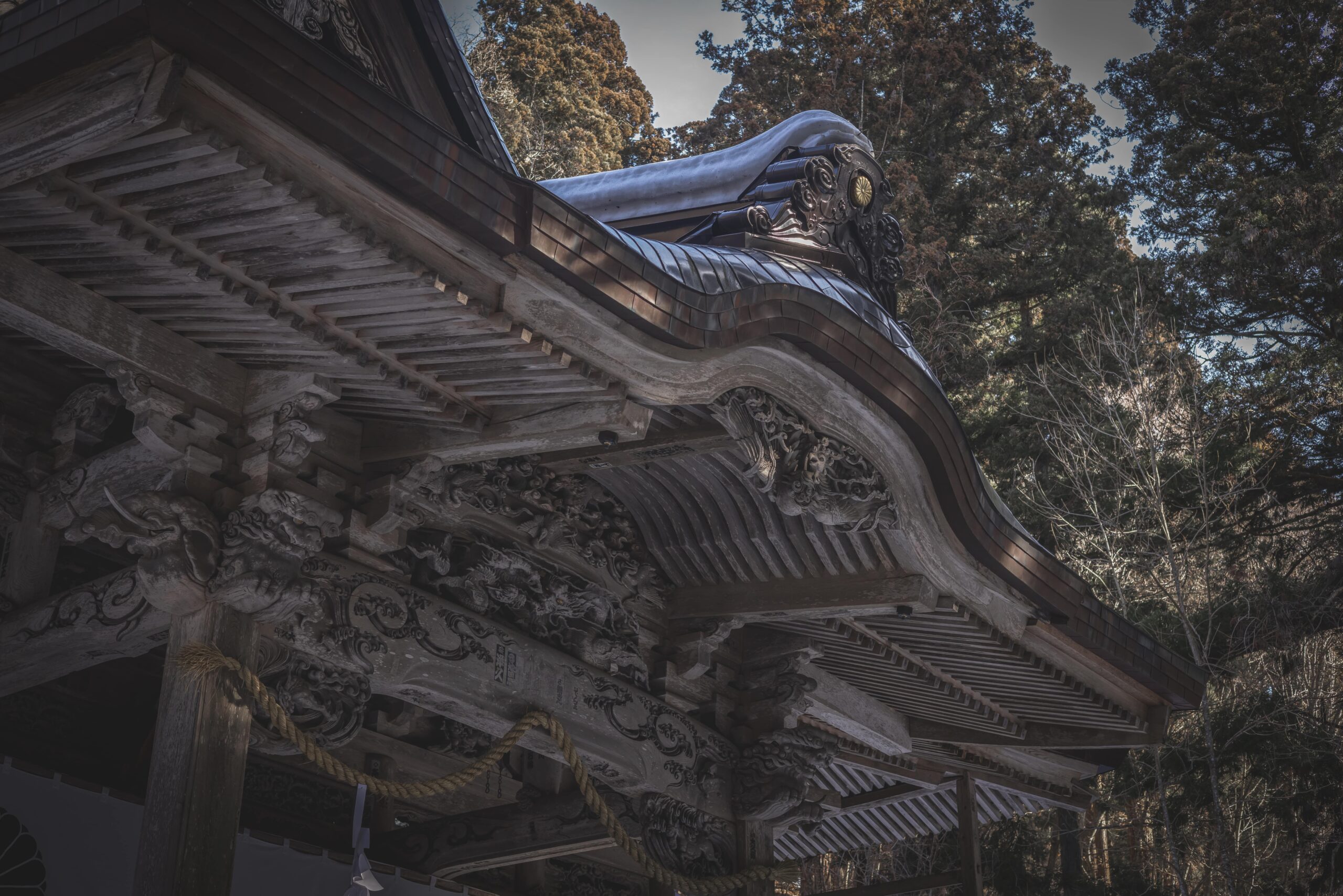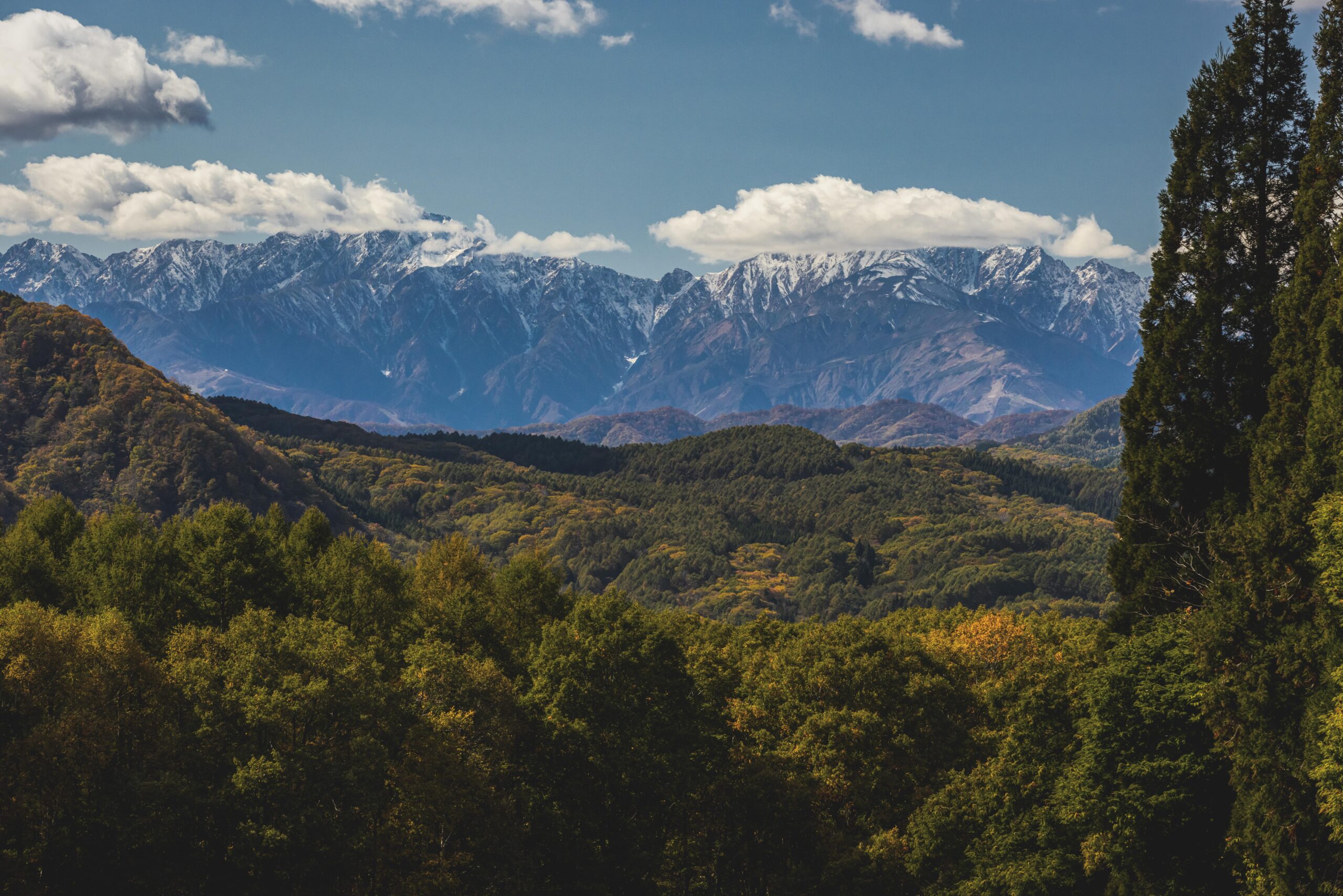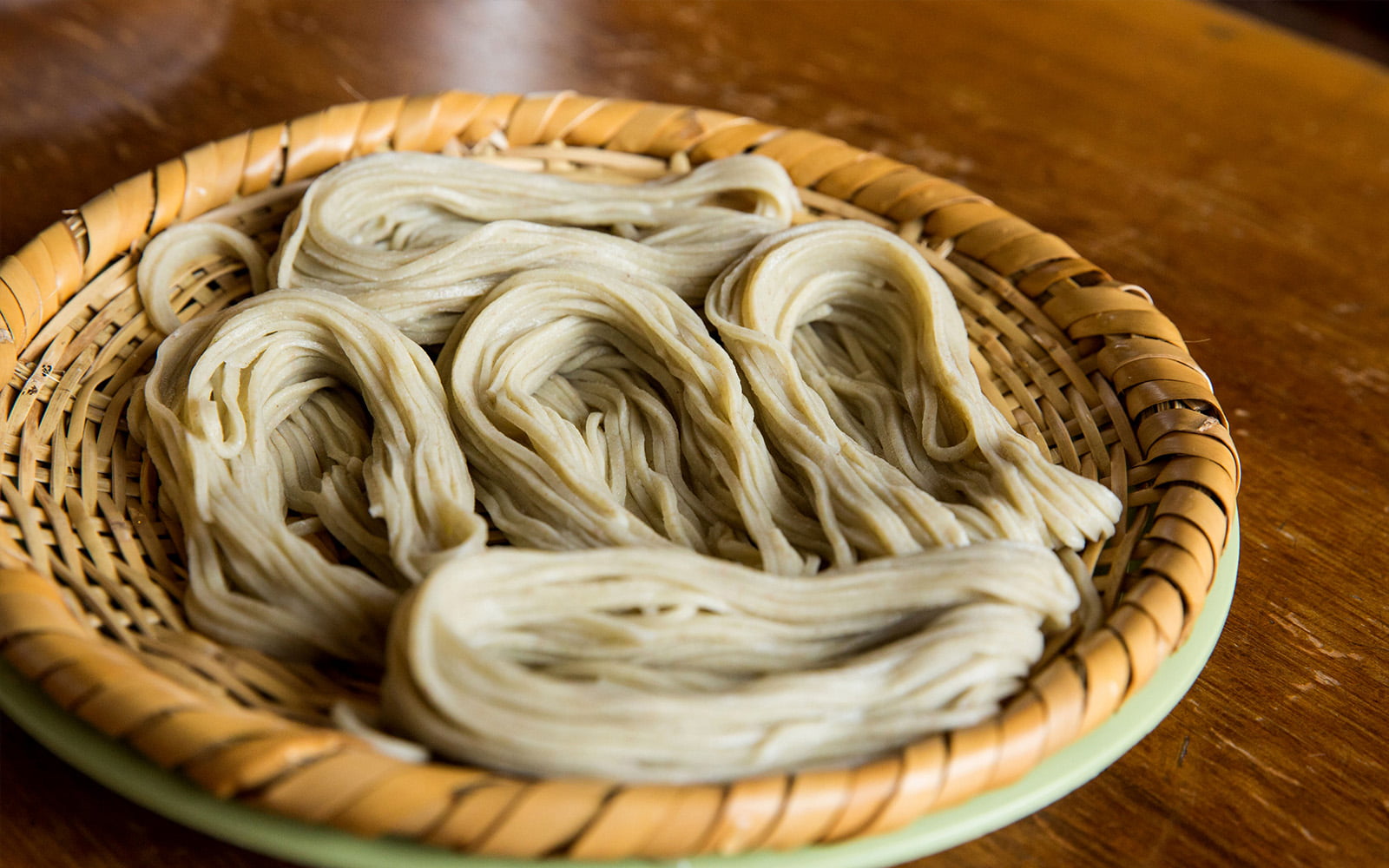
MENU

Over two thousand years ago, the Togakushi faith came into existence.
Togakushi Shrine, renowned for being the setting of the "Amanoiwato-kaki Shinwa" (myth of the heavenly rock cave), enshrines gods with connections to this myth, including the "Kuzuryu-Okami" (Nine-Headed Dragon Great God) as the deity of water and fertility.
The essence of Togakushi faith lies in the indispensable role of "water" for all living beings.
Togakushi faith intertwines with Shugendo (a Japanese mountain asceticism-shamanism incorporating Shinto and Buddhist concepts).
From the medieval to early modern periods,
people from across the country started making pilgrimages, leading to the spread of "Togakushi-ko" (gatherings to spread the Togakushi faith). During the Edo period,"shukubo" lodgings were established to accommodate pilgrims.
Beyond these lodgings, the town flourished with residences of farmers and artisans,
forming what is known as "monzen-machi" (a town outside the gate).
Numerous farming families participated in Togakushi-ko, where they would visit Togakushi in spring, bring back water,
sow it in their fields for a bountiful harvest, and offer the harvested crops to Togakushi in autumn.
Along with Togakushi Shrine,
they continue to uphold the spirit of natural reverence, fostering a deep-rooted connection to the traditions of faith.

The Togakushi region is part of the Myoko-Togakushi Renzan National Park,
spanning Niigata and Nagano Prefectures.
Mount Togakushi, a sacred mountain with an elevation of 1,911 meters, is a steep mountain range that emerged from the upheaval of the ancient seabed.
Its majestic appearance reflects both the beauty and severity of nature.
The plateaus at the foot of the mountain are a treasure trove of wildlife, home to various birds, butterflies, and alpine plants.This biodiversity attracts numerous climbers and nature enthusiasts to the region.

Togakushi is renowned nationwide for its soba (buckwheat noodles).
The distinct aroma of locally harvested soba flour, combined with the pristine water sourced from the mountainsand the craftsmanship of skilled artisans, gives rise to the creation of high-quality Togakushi soba.
Soba is harvested twice a year, in summer and autumn.
The soba harvested in autumn, known as "shin soba" (new soba), can be enjoyed after the "Shin Soba Kennou-sai" (New Soba Dedication Festival) held at Togakushi Shrine in late October.

Togakushi is known for its traditional craft of making bamboo crafts using locally produced twisted bamboo.
This skill has its roots in the early Edo period
and has been passed down through generations
as a winter handcraft in the snow-covered surroundings of Togakushi.
Crafted patiently by skilled artisans, these bamboo crafts exhibit delicacy, beauty, and durability, adding a touch of richness to everyday life.
